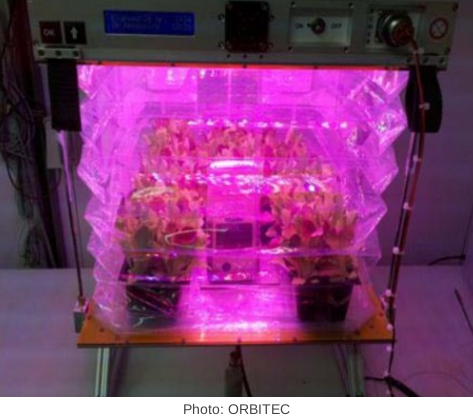NASA Reveals Inaugural Image of Space Tomatoes, Lost for 8 Months.
Several days ago, astronauts on the International Space Station (ISS) revealed the retrieval of two long-lost space-cultivated tomatoes, which had been missing for eight months.

The announcement triggered a wave of reactions on social media, with concerns raised about the tomatoes’ condition after such an extended period. In response, NASA took to YouTube to address the queries, explaining that the tomatoes were found to be ‘dehydrated and slightly squished’ with no ‘visible microbial or fungal growth.’
What experiment is NASA conducting involving the growth of tomatoes in space?
“Almost a year following astronaut Frank Rubio’s unintentional misplacement of them during the XROOTS experiment harvest, two renegade tomatoes have been located, dispelling previous suspicions that Rubio consumed them. The stray fruits were recovered from a plastic bag, displaying dehydration and slight flattening, along with some discoloration. However, NASA confirmed the absence of visible microbial or fungal growth.
The significance of this research lies in the context of XROOTS, which cultivates plants without traditional soil or growth media, utilizing hydroponic and aeroponic techniques. The current challenges associated with bulk, maintenance, and sanitation hinder the scalability of existing plant systems in space environments.
NASA emphasized that XROOT’s soil-less techniques could offer viable solutions for plant systems essential in future space exploration missions.”
“How space travel will be transformed: Research conducted on the space station is driving technological and scientific advancements essential for cultivating plants in space, thereby enabling humans to extend the frontiers of space exploration,” stated the agency. View the video for more details.
NASA’s experiment of growing tomatoes in space is actually a series of ongoing studies, each with its own specific goals and methods. Here’s a look at some of the most notable ones:
1. Veggie: This facility aboard the International Space Station (ISS) has been used to grow various plants, including tomatoes, since 2014. It utilizes a closed-loop hydroponic system, where the plants’ roots dangle in nutrient-rich water instead of soil. Astronauts like Josh Cassada have tended to Veggie plants, providing valuable data on plant growth in microgravity.
2. XROOTS: This experiment, conducted by American astronaut Frank Rubio in 2022, involved growing dwarf tomato plants using a novel root growth system. The system aimed to address challenges of root growth in microgravity, potentially paving the way for larger-scale space agriculture. Interestingly, the first two tomatoes harvested from this experiment were lost but later found, adding a touch of human drama to the research!
3. VEG-05: This ongoing study uses the Veggie facility to cultivate dwarf tomatoes with a focus on testing different fertilizer techniques, microbial food safety, and the nutritional value and taste of space-grown produce. Astronaut Nicole Mann recently prepared the system for this experiment, highlighting NASA’s continued efforts to optimize space agriculture.
These are just a few examples, and NASA’s research on growing tomatoes in space continues to evolve. The ultimate goal is to develop reliable and sustainable methods for astronauts to cultivate fresh food during long-term space missions, reducing reliance on supplies from Earth and potentially even establishing self-sufficient space outposts in the future.
Here are some additional interesting facts about NASA’s tomato experiments:
- The first tomato ever grown in space was harvested on May 10, 2023, by Sultan Alneyadi, an astronaut from the United Arab Emirates.
- The dwarf tomato varieties used in these experiments are specially chosen for their compact size and suitability for growth in confined spaces.
- Growing plants in space presents unique challenges, such as microgravity, limited light, and radiation exposure. NASA scientists are constantly working to overcome these challenges and improve the efficiency and yield of space agriculture.
I hope this information gives you a good overview of NASA’s exciting experiments in growing tomatoes in space!